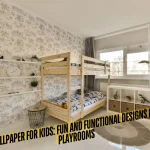Home renovation projects can be exciting, but they often come with financial challenges. Without careful planning, costs can quickly spiral out of control, leaving homeowners with unexpected expenses and unfinished work. Staying on budget requires strategic planning, disciplined decision-making, and smart financial management. From setting realistic expectations to negotiating with contractors, a structured approach ensures a successful renovation without financial strain.
Establishing a Detailed Budget
Before beginning any renovation project, it is essential to create a comprehensive budget that includes all potential expenses. Homeowners should list every aspect of the renovation, from materials and labor costs to permits and unexpected contingencies. Researching average costs for similar projects provides a realistic framework for estimating expenses. Allocating an additional 10 to 20 percent of the budget for unforeseen costs ensures flexibility in handling unexpected challenges. A well-defined budget helps prioritize spending and prevents impulse decisions that could jeopardize financial stability.
Prioritizing Essential Renovations
One of the most effective ways to control costs is by focusing on necessary renovations rather than purely aesthetic upgrades. Structural repairs, plumbing updates, and electrical work should take priority over cosmetic enhancements. Identifying key areas that improve functionality or increase property value ensures that resources are used efficiently. Homeowners should differentiate between must-have upgrades and optional additions to prevent unnecessary expenses. A clear distinction between essential repairs and decorative changes keeps the renovation budget on track.
Researching Cost-Effective Materials
Material selection plays a significant role in renovation expenses, and opting for affordable alternatives can lead to substantial savings. High-quality yet budget-friendly materials allow homeowners to achieve stylish results without exceeding financial limits. Choosing durable laminate flooring instead of hardwood or quartz countertops instead of marble provides aesthetic appeal at a lower cost. Comparing prices at multiple suppliers, exploring discount outlets, and considering second-hand options help reduce material expenses. Investing in energy-efficient materials also leads to long-term savings on utility bills, enhancing both affordability and sustainability.
Comparing Quotes from Contractors
Hiring professionals for renovations is often necessary, but selecting the right contractor requires careful evaluation. Homeowners should obtain multiple quotes from reputable home renovation contractors NYC to compare pricing and services. Reviewing customer feedback, checking credentials, and assessing previous work ensures quality and reliability. Negotiating costs based on competitive pricing and requesting detailed breakdowns of expenses helps avoid hidden charges. Contracts should outline all project costs, deadlines, and payment terms to prevent disputes and financial surprises. A well-structured agreement ensures transparency and protects homeowners from unexpected price increases.
Avoiding Structural Changes
Major structural alterations can significantly increase renovation costs due to labor-intensive modifications and permit requirements. Keeping the existing layout intact minimizes expenses associated with plumbing and electrical adjustments. Simple updates such as repainting walls, replacing fixtures, and refinishing surfaces provide noticeable improvements without requiring extensive construction. Utilizing existing frameworks instead of demolishing and rebuilding reduces costs while maintaining a fresh and updated appearance. Strategic planning ensures that the renovation enhances functionality without unnecessary financial burdens.
Timing Renovations Strategically
Scheduling renovations during off-peak seasons can lead to lower costs, as contractors may offer discounts during less busy periods. Suppliers often provide seasonal promotions, allowing homeowners to purchase materials at reduced prices. Avoiding peak demand for labor and resources results in more affordable rates for professional services. Smart timing decisions contribute to budget-friendly renovations while maintaining quality and efficiency.
Repurposing and Upcycling Existing Elements
Instead of purchasing new furnishings and fixtures, repurposing existing elements adds character and uniqueness to a renovation without excessive costs. Refinishing cabinets, repainting doors, and reupholstering furniture extend the lifespan of materials while reducing expenses. Salvaged wood, recycled tiles, and second-hand décor items create stylish interiors with an eco-friendly approach. Reusing materials not only saves money but also supports sustainable renovation practices.
Managing Unexpected Expenses
Renovations often come with unforeseen challenges such as plumbing issues, structural weaknesses, or permit delays. Setting aside emergency funds ensures financial preparedness for unexpected costs. Maintaining a buffer within the budget prevents stress when dealing with last-minute adjustments. Homeowners should remain flexible but disciplined in managing extra expenses to avoid exceeding financial limits. Being proactive in addressing potential risks minimizes disruptions and ensures smooth project completion.
Sticking to the Original Plan
One of the most common reasons homeowners exceed their budget is making impulsive changes during renovations. Expanding project scope, upgrading materials mid-renovation, or altering designs outside the initial plan often results in additional expenses. Staying committed to the original blueprint prevents costly modifications and ensures financial discipline. Making decisions based on the predetermined budget prevents overspending while maintaining consistency throughout the renovation.
Conclusion
A successful home renovation requires meticulous financial planning and disciplined execution. Establishing a clear budget, prioritizing necessary upgrades, researching cost-effective solutions, and securing reliable contractors contribute to affordability and efficiency. By avoiding unnecessary structural changes, timing purchases strategically, repurposing existing elements, and preparing for unexpected costs, homeowners can achieve stylish and functional renovations without financial strain. Maintaining financial discipline and adhering to the original plan ensures that renovations enhance both comfort and property value without exceeding budgetary constraints. Thoughtful preparation and smart spending lead to a satisfying home transformation while maintaining long-term financial stability. Transform your living space with expert craftsmanship—discover stunning home renovation solutions.










